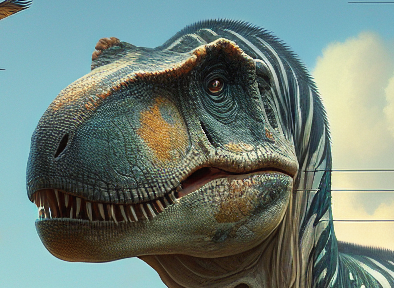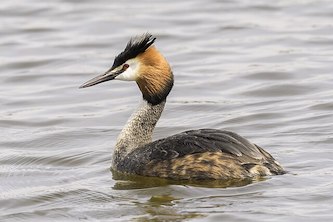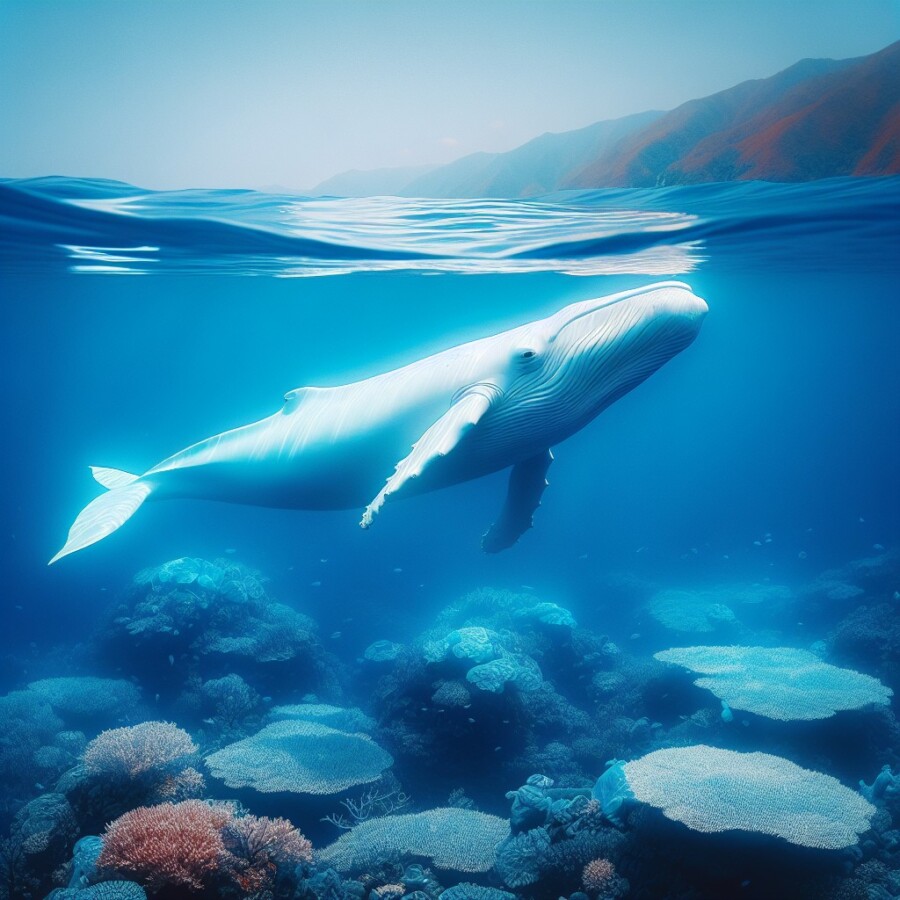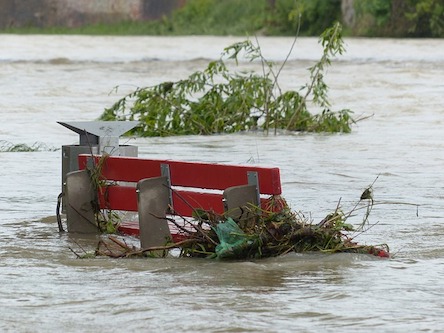Scientists have discovered the last meal of a 75-million-year-old tyrannosaur, which consisted of two baby dinosaurs. This finding provides new insights into the dietary habits of these predators. The preserved remains of the tyrannosaur and the small dinosaurs it consumed reveal that tyrannosaurs changed their diet as they grew. The specimen in question is a juvenile gorgosaurus, a close relative of the T. rex. It was about seven years old and weighed approximately 330kg at the time of its death. The hind limbs of two small bird-like dinosaurs called citipes were found beneath its ribcage.
Previous fossil evidence, including bite marks on the bones of larger dinosaurs that match tyrannosaur teeth, has allowed scientists to understand how adult gorgosaurs hunted and consumed large plant-eating dinosaurs. Adult tyrannosaurs were indiscriminate eaters, pouncing on large prey and biting through bone to scrape off flesh. However, the smaller, immature tyrannosaurs were not yet capable of hunting large herbivores. Instead, they likely targeted smaller, young dinosaurs.
The fossil containing the remains of the juvenile gorgosaurus and its prey was discovered in the Alberta Badlands in 2009. It took several years to prepare the fossil, and the presence of prey inside was not immediately apparent. The complete hind legs of two baby dinosaurs were eventually revealed. The researchers speculate that the gorgosaurus was particularly interested in the drumstick portion of its prey.
The gorgosaurus is a slightly smaller and older species than the T. rex. As they matured, gorgosaurs transformed, with juveniles having longer legs and blade-like teeth, while adults had rounder teeth. This unique specimen provides physical evidence of the different feeding strategies employed by juveniles and adults. While adults used their powerful teeth to bite and scrape, the juvenile gorgosaurus selectively chose and even dissected its prey, biting off the legs and swallowing them whole.
This discovery highlights that tyrannosaurs were not just monstrous creatures but sophisticated feeders. It also challenges the depiction of T. rex in popular culture, such as the film Jurassic Park, where the giant dinosaur is shown chasing after cars. In reality, it would have been the younger, more agile individuals, like the gorgosaurus, that would have been more likely to engage in such behavior.
Original news source: Tyrannosaur’s last meal was two baby dinosaurs (BBC)
Listen:
Slow
Normal
Fast
Vocabulary:
| 1 | tyrannosaur | A large, carnivorous dinosaur of the tyrannosaur family |
| 2 | insights | New or deeper understanding or knowledge |
| 3 | predators | Animals that hunt and kill other animals for food |
| 4 | specimen | A single example or sample used to represent a larger group |
| 5 | hind limbs | The back legs of an animal |
| 6 | fossil | The preserved remains or traces of a once-living organism |
| 7 | prey | An animal that is hunted and killed by another for food |
| 8 | immature | Not fully developed or mature |
| 9 | Badlands | A region characterized by barren, eroded terrain |
| 10 | drumstick | The lower part of a bird’s leg, typically used for meat |
| 11 | species | A distinct type or kind of organism |
| 12 | physical evidence | Concrete proof or evidence based on physical characteristics |
| 13 | feeding strategies | Different methods or approaches used to obtain food |
| 14 | sophisticated | Having a high level of complexity or refinement |
| 15 | depiction | The portrayal or representation of something in a particular way |
Group or Classroom Activities
Warm-up Activities:
– News Summary
Instructions: Divide the class into pairs or small groups. Give each group a few minutes to read the article. Then, ask each group to summarize the main points of the article in a news-style summary. Have each group share their summary with the class and compare the different summaries.
– Opinion Poll
Instructions: Ask the students to form pairs or small groups. Give each group a statement related to the article, such as “Do you think this discovery changes our understanding of tyrannosaur behavior?” or “Do you believe that the depiction of T. rex in popular culture is accurate?” Have each group discuss the statement and come up with their own opinions. Then, conduct a class-wide opinion poll, where each group presents their opinion and the rest of the class votes on whether they agree or disagree.
– Vocabulary Pictionary
Instructions: Write a selection of key vocabulary words from the article on separate slips of paper. Divide the class into two teams. One student from each team will come to the front of the class and choose a slip of paper. They must then draw a picture to represent the word without using any words or letters. The team members must guess the word based on the drawing within a time limit. The team with the most correct guesses wins.
– Headline Creation
Instructions: In pairs or small groups, ask the students to create catchy headlines for the article. Encourage them to think of attention-grabbing phrases that summarize the main points or emphasize the significance of the discovery. Have each group share their headline with the class and discuss why they chose it.
– Pros and Cons
Instructions: Divide the class into two groups. Assign one group to argue the pros of the discovery (e.g. how it contributes to scientific knowledge, understanding of dinosaur behavior) and the other group to argue the cons (e.g. how it challenges existing theories, the limitations of the study). Give each group time to prepare their arguments and then have a class debate, with each group presenting their points and responding to counterarguments.
Comprehension Questions:
1. What did scientists discover about the last meal of the 75-million-year-old tyrannosaur?
2. How does the discovery of the last meal provide new insights into the dietary habits of tyrannosaurs?
3. What type of dinosaur is the preserved remains of the tyrannosaur?
4. How old was the juvenile gorgosaurus when it died?
5. What was the weight of the juvenile gorgosaurus at the time of its death?
6. What evidence has allowed scientists to understand how adult gorgosaurs hunted and consumed large plant-eating dinosaurs?
7. What did the smaller, immature tyrannosaurs likely target as prey?
8. Where was the fossil containing the remains of the juvenile gorgosaurus and its prey discovered?
Go to answers ⇩
Listen and Fill in the Gaps:
Scientists have discovered the last meal of a 75-million-year-old (1)______, which consisted of two baby dinosaurs. This finding provides new (2)______ into the dietary habits of these predators. The preserved remains of the tyrannosaur and the small dinosaurs it (3)______ reveal that tyrannosaurs (4)______ their diet as they grew. The specimen in question is a juvenile gorgosaurus, a close relative of the T. rex. It was about seven years old and weighed approximately 330kg at the time of its death. The hind limbs of two small bird-like dinosaurs called citipes were found beneath its ribcage.
Previous fossil evidence, (5)______ bite marks on the bones of larger dinosaurs that match tyrannosaur teeth, has allowed scientists to understand how (6)______ gorgosaurs hunted and consumed large plant-eating dinosaurs. Adult tyrannosaurs were indiscriminate eaters, pouncing on large prey and (7)______ through bone to scrape off flesh. However, the smaller, immature tyrannosaurs were not yet capable of hunting large herbivores. Instead, they likely targeted smaller, young dinosaurs.
The fossil containing the remains of the (8)______ gorgosaurus and its prey was discovered in the Alberta Badlands in 2009. It took several years to prepare the fossil, and the presence of prey inside was not immediately apparent. The complete hind legs of two baby dinosaurs were eventually (9)______. The researchers (10)______ that the gorgosaurus was particularly (11)______ in the drumstick portion of its prey.
The gorgosaurus is a slightly smaller and older species than the T. rex. As they matured, gorgosaurs transformed, with juveniles having longer legs and blade-like teeth, while adults had rounder teeth. This unique specimen provides physical evidence of the different feeding (12)______ employed by juveniles and adults. While adults used their powerful teeth to bite and scrape, the juvenile gorgosaurus selectively chose and even dissected its prey, biting off the legs and swallowing them whole.
This discovery (13)______ that tyrannosaurs were not just monstrous creatures but sophisticated feeders. It also challenges the depiction of T. rex in popular culture, such as the film (14)______ Park, where the giant dinosaur is shown chasing after cars. In reality, it would have been the younger, more (15)______ individuals, like the gorgosaurus, that would have been more likely to (16)______ in such behavior.
Go to answers ⇩
Discussion Questions:
Students can ask a partner these questions, or discuss them as a group.
1. What is your opinion on the discovery of the last meal of the 75-million-year-old tyrannosaur?
2. How would you feel if you found out that the tyrannosaur’s last meal consisted of two baby dinosaurs?
3. Do you like learning about dinosaurs? Why or why not?
4. Do you think it is important for scientists to study the dietary habits of ancient predators? Why or why not?
5. What do you think the discovery of the juvenile gorgosaurus and its prey reveals about the feeding habits of tyrannosaurs?
6. How do you think the feeding habits of the juvenile gorgosaurus compare to those of adult tyrannosaurs?
7. Why do you think the gorgosaurus selectively chose and dissected its prey, while adult tyrannosaurs were indiscriminate eaters?
8. What do you think the presence of prey inside the fossil of the juvenile gorgosaurus indicates about its behavior?
9. How do you think the depiction of T. rex in popular culture, such as Jurassic Park, differs from the reality revealed by this discovery?
10. Do you think it is important for popular culture to accurately portray scientific discoveries? Why or why not?
11. What other scientific discoveries have you found particularly interesting or surprising? Why?
12. How do you think the discovery of the juvenile gorgosaurus and its prey contributes to our understanding of prehistoric ecosystems?
13. What other aspects of the lives of dinosaurs do you think scientists should study? Why?
14. How do you think the dietary habits of ancient predators compare to those of modern predators?
15. Do you think the study of dinosaurs and ancient ecosystems is relevant to our lives today? Why or why not?
Individual Activities
Vocabulary Meanings:
Match each word to its meaning.
Words:
1. tyrannosaur
2. insights
3. predators
4. specimen
5. hind limbs
6. fossil
7. prey
8. immature
9. Badlands
10. drumstick
11. species
12. physical evidence
13. feeding strategies
14. sophisticated
15. depiction
Meanings:
(A) New or deeper understanding or knowledge
(B) A region characterized by barren, eroded terrain
(C) Concrete proof or evidence based on physical characteristics
(D) A single example or sample used to represent a larger group
(E) The portrayal or representation of something in a particular way
(F) The preserved remains or traces of a once-living organism
(G) The lower part of a bird’s leg, typically used for meat
(H) An animal that is hunted and killed by another for food
(I) A large, carnivorous dinosaur of the tyrannosaur family
(J) Animals that hunt and kill other animals for food
(K) The back legs of an animal
(L) Not fully developed or mature
(M) Different methods or approaches used to obtain food
(N) Having a high level of complexity or refinement
(O) A distinct type or kind of organism
Go to answers ⇩
Multiple Choice Questions:
1. What did scientists discover about the last meal of the 75-million-year-old tyrannosaur?
(a) It consisted of large plant-eating dinosaurs
(b) It consisted of two baby dinosaurs
(c) It consisted of small bird-like dinosaurs
(d) It consisted of drumsticks
2. What is the name of the close relative of the T. rex that the preserved remains belong to?
(a) Gorgosaurus
(b) Citipes
(c) Alberta Badlands
(d) Jurassic Park
3. How old was the juvenile gorgosaurus at the time of its death?
(a) About 75 million years old
(b) About 330kg old
(c) About two baby dinosaurs old
(d) About seven years old
4. How did adult tyrannosaurs hunt and consume large plant-eating dinosaurs?
(a) By dissecting them and biting off their legs
(b) By selectively choosing and swallowing them whole
(c) By chasing after cars
(d) By pouncing on them and biting through bone to scrape off flesh
5. Where was the fossil containing the remains of the juvenile gorgosaurus and its prey discovered?
(a) Jurassic Park
(b) Berlin
(c) Alberta Badlands
(d) Tokyo
6. How did gorgosaurs transform as they matured?
(a) Juveniles had longer legs and blade-like teeth, while adults had rounder teeth
(b) Juveniles had rounder teeth, while adults had longer legs and blade-like teeth
(c) Juveniles had longer legs and rounder teeth, while adults had blade-like teeth
(d) Juveniles had blade-like teeth, while adults had longer legs and rounder teeth
7. What feeding strategies did the juvenile gorgosaurus employ?
(a) Pouncing on large prey and biting through bone to scrape off flesh
(b) Chasing after cars
(c) Selectively choosing and even dissecting its prey, biting off the legs and swallowing them whole
(d) Targeting smaller, young dinosaurs
8. What does this discovery challenge about the depiction of T. rex in popular culture?
(a) That it would have been the older, less agile individuals that would have been more likely to engage in chasing after cars
(b) That it would have been the younger, more agile individuals that would have been more likely to engage in chasing after cars
(c) That it would have been the larger, more powerful individuals that would have been more likely to engage in chasing after cars
(d) That it would have been the smaller, less powerful individuals that would have been more likely to engage in chasing after cars
Go to answers ⇩
True or False Questions:
1. The preserved remains of the tyrannosaur and the small dinosaurs it consumed reveal that tyrannosaurs maintained the same diet as they grew.
2. The smaller, immature tyrannosaurs likely targeted smaller, young dinosaurs instead of hunting large herbivores.
3. The fossil containing the remains of the juvenile gorgosaurus and its prey was discovered in the Alberta Badlands in 2009.
4. Scientists have not discovered the last meal of a 75-million-year-old tyrannosaur, which did not consist of two baby dinosaurs.
5. Previous fossil evidence has prevented scientists from understanding how adult gorgosaurs hunted and consumed large plant-eating dinosaurs.
6. The gorgosaurus transformed as it matured, with juveniles having longer legs and blade-like teeth, while adults had rounder teeth.
7. Adult tyrannosaurs were selective eaters, avoiding large prey and avoiding biting through bone to scrape off flesh.
8. The specimen in question is a juvenile gorgosaurus, a close relative of the T. rex.
Go to answers ⇩
Write a Summary:
Write a summary of this news article in two sentences.
Check your writing now with the best free AI for English writing!
Writing Questions:
Answer the following questions. Write as much as you can for each answer.
Check your answers with our free English writing assistant!
1. What did scientists discover about the last meal of the 75-million-year-old tyrannosaur?
2. How did the dietary habits of tyrannosaurs change as they grew?
3. How did the juvenile gorgosaurus hunt and consume its prey?
4. Where was the fossil containing the remains of the juvenile gorgosaurus and its prey discovered?
5. How does this discovery challenge the depiction of T. rex in popular culture?
Answers
Comprehension Question Answers:
1. Scientists discovered that the last meal of the 75-million-year-old tyrannosaur consisted of two baby dinosaurs.
2. The discovery of the last meal provides new insights into the dietary habits of tyrannosaurs by showing that they changed their diet as they grew.
3. The preserved remains of the tyrannosaur are of a juvenile gorgosaurus, a close relative of the T. rex.
4. The juvenile gorgosaurus was about seven years old when it died.
5. The weight of the juvenile gorgosaurus at the time of its death was approximately 330kg.
6. Previous fossil evidence, including bite marks on the bones of larger dinosaurs that match tyrannosaur teeth, has allowed scientists to understand how adult gorgosaurs hunted and consumed large plant-eating dinosaurs.
7. The smaller, immature tyrannosaurs likely targeted smaller, young dinosaurs as prey.
8. The fossil containing the remains of the juvenile gorgosaurus and its prey was discovered in the Alberta Badlands.
Go back to questions ⇧
Listen and Fill in the Gaps Answers:
(1) tyrannosaur
(2) insights
(3) consumed
(4) changed
(5) including
(6) adult
(7) biting
(8) juvenile
(9) revealed
(10) speculate
(11) interested
(12) strategies
(13) highlights
(14) Jurassic
(15) agile
(16) engage
Go back to questions ⇧
Vocabulary Meanings Answers:
1. tyrannosaur
Answer: (I) A large, carnivorous dinosaur of the tyrannosaur family
2. insights
Answer: (A) New or deeper understanding or knowledge
3. predators
Answer: (J) Animals that hunt and kill other animals for food
4. specimen
Answer: (D) A single example or sample used to represent a larger group
5. hind limbs
Answer: (K) The back legs of an animal
6. fossil
Answer: (F) The preserved remains or traces of a once-living organism
7. prey
Answer: (H) An animal that is hunted and killed by another for food
8. immature
Answer: (L) Not fully developed or mature
9. Badlands
Answer: (B) A region characterized by barren, eroded terrain
10. drumstick
Answer: (G) The lower part of a bird’s leg, typically used for meat
11. species
Answer: (O) A distinct type or kind of organism
12. physical evidence
Answer: (C) Concrete proof or evidence based on physical characteristics
13. feeding strategies
Answer: (M) Different methods or approaches used to obtain food
14. sophisticated
Answer: (N) Having a high level of complexity or refinement
15. depiction
Answer: (E) The portrayal or representation of something in a particular way
Go back to questions ⇧
Multiple Choice Answers:
1. What did scientists discover about the last meal of the 75-million-year-old tyrannosaur?
Answer: (b) It consisted of two baby dinosaurs
2. What is the name of the close relative of the T. rex that the preserved remains belong to?
Answer: (a) Gorgosaurus
3. How old was the juvenile gorgosaurus at the time of its death?
Answer: (d) About seven years old
4. How did adult tyrannosaurs hunt and consume large plant-eating dinosaurs?
Answer: (d) By pouncing on them and biting through bone to scrape off flesh
5. Where was the fossil containing the remains of the juvenile gorgosaurus and its prey discovered?
Answer: (c) Alberta Badlands
6. How did gorgosaurs transform as they matured?
Answer: (a) Juveniles had longer legs and blade-like teeth, while adults had rounder teeth
7. What feeding strategies did the juvenile gorgosaurus employ?
Answer: (c) Selectively choosing and even dissecting its prey, biting off the legs and swallowing them whole
8. What does this discovery challenge about the depiction of T. rex in popular culture?
Answer: (b) That it would have been the younger, more agile individuals that would have been more likely to engage in chasing after cars
Go back to questions ⇧
True or False Answers:
1. The preserved remains of the tyrannosaur and the small dinosaurs it consumed reveal that tyrannosaurs maintained the same diet as they grew. (Answer: False)
2. The smaller, immature tyrannosaurs likely targeted smaller, young dinosaurs instead of hunting large herbivores. (Answer: True)
3. The fossil containing the remains of the juvenile gorgosaurus and its prey was discovered in the Alberta Badlands in 2009. (Answer: True)
4. Scientists have not discovered the last meal of a 75-million-year-old tyrannosaur, which did not consist of two baby dinosaurs. (Answer: False)
5. Previous fossil evidence has prevented scientists from understanding how adult gorgosaurs hunted and consumed large plant-eating dinosaurs. (Answer: False)
6. The gorgosaurus transformed as it matured, with juveniles having longer legs and blade-like teeth, while adults had rounder teeth. (Answer: True)
7. Adult tyrannosaurs were selective eaters, avoiding large prey and avoiding biting through bone to scrape off flesh. (Answer: False)
8. The specimen in question is a juvenile gorgosaurus, a close relative of the T. rex. (Answer: True)
Go back to questions ⇧













